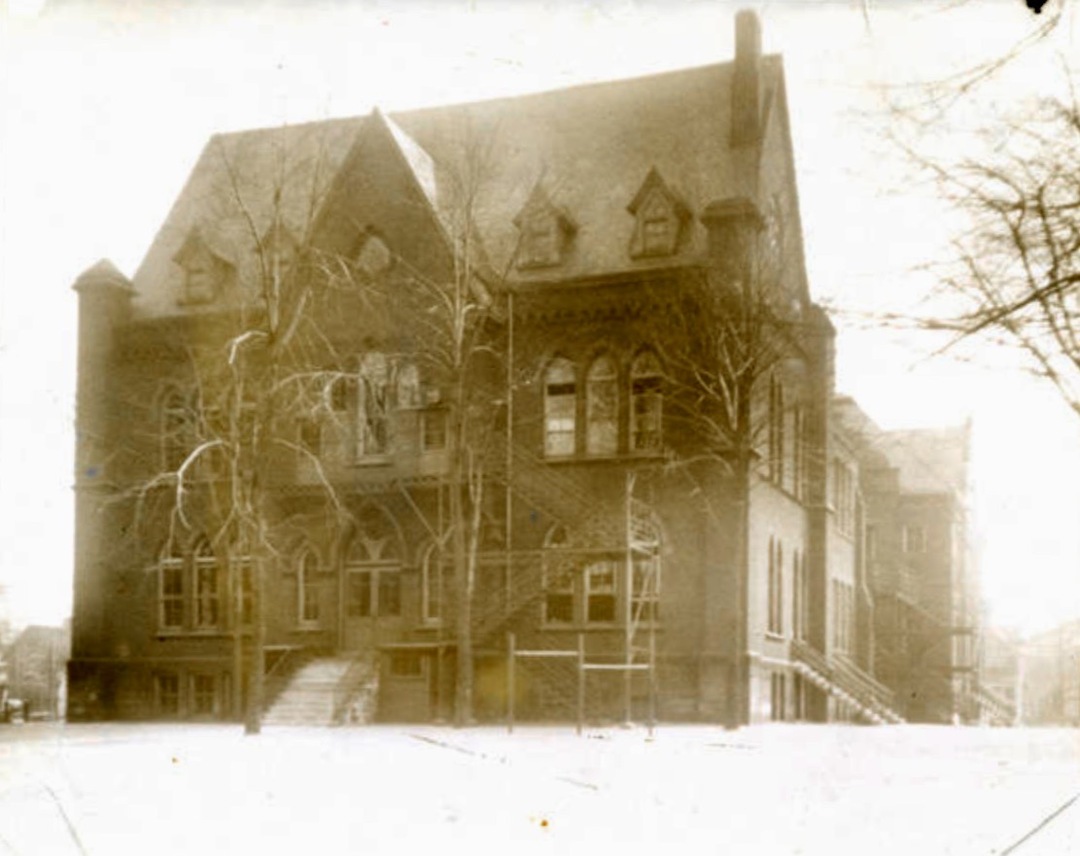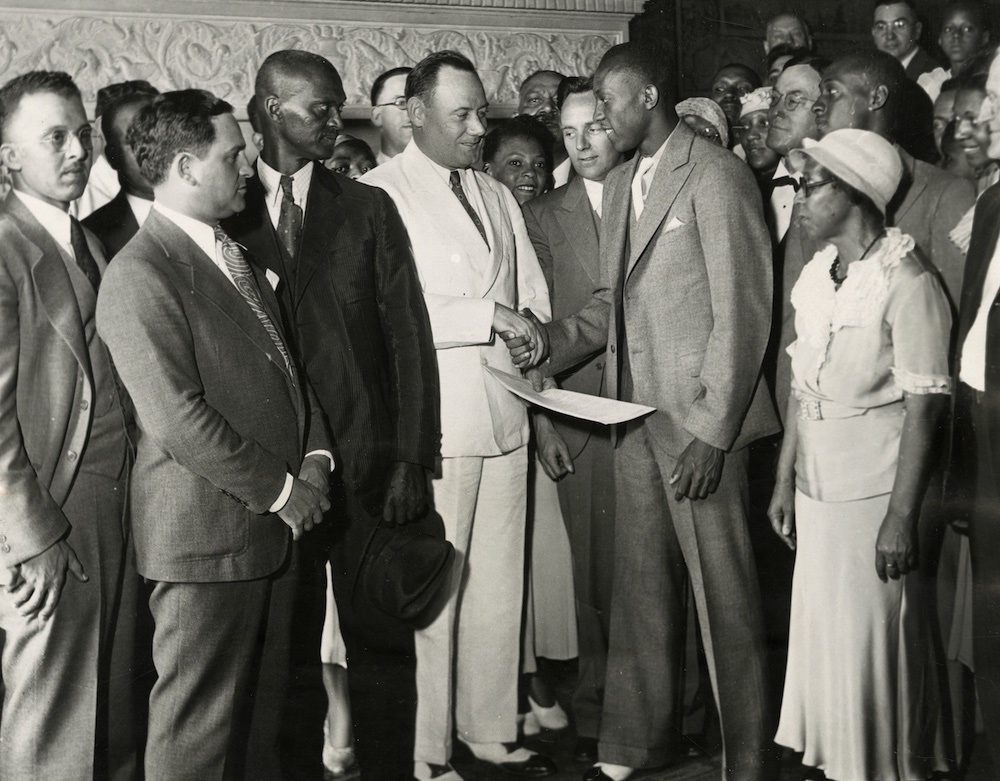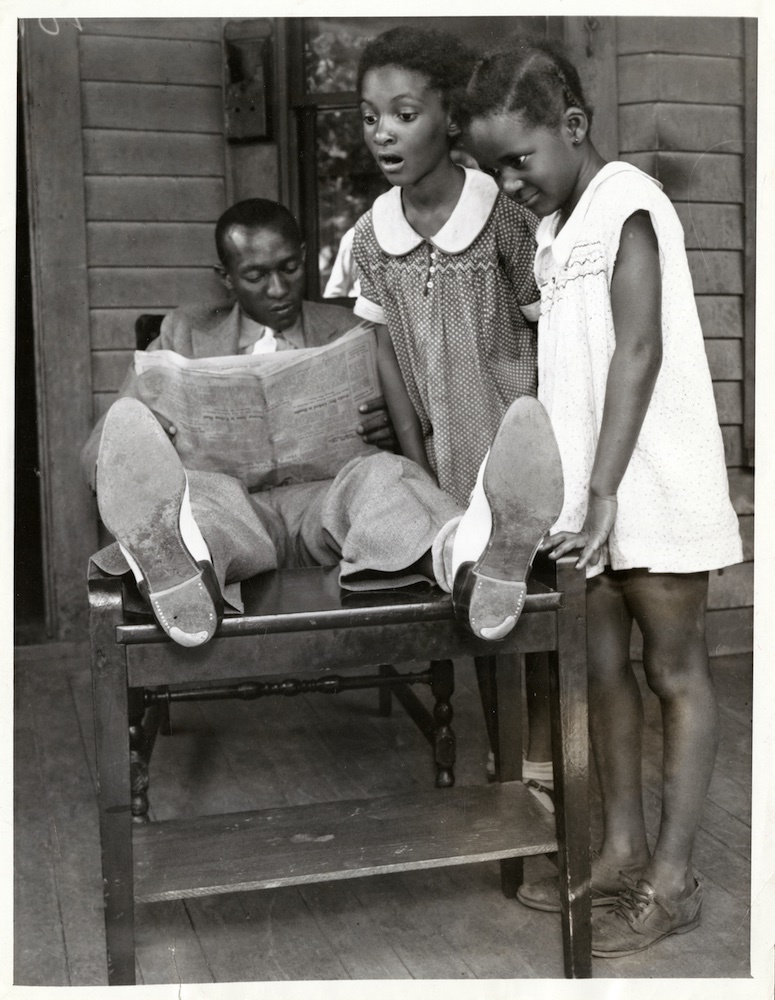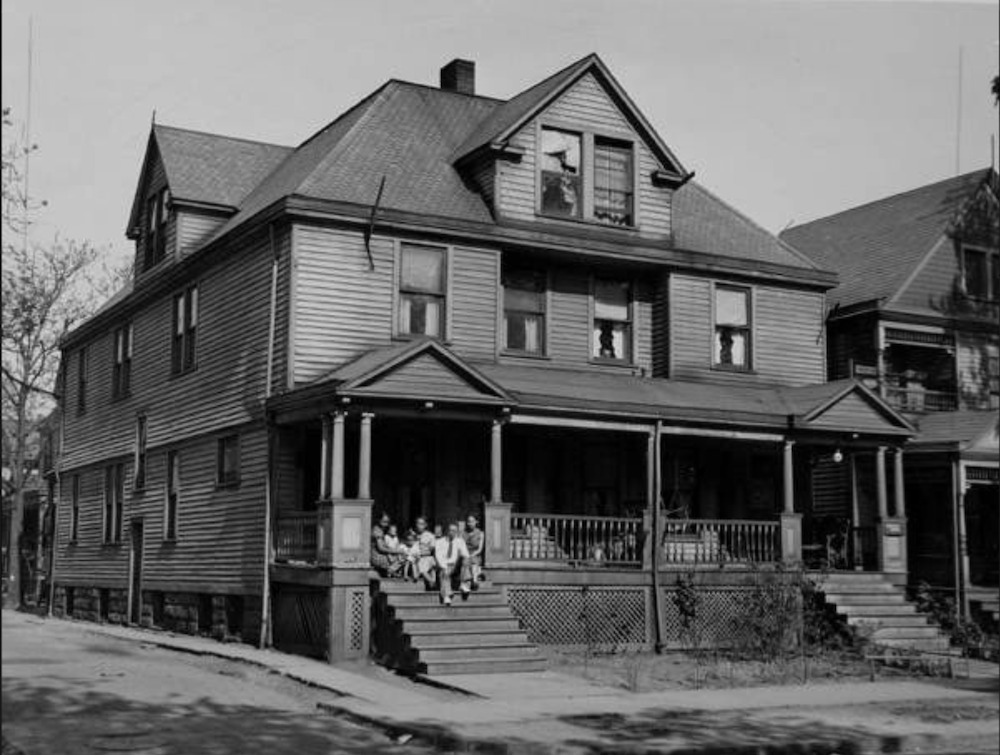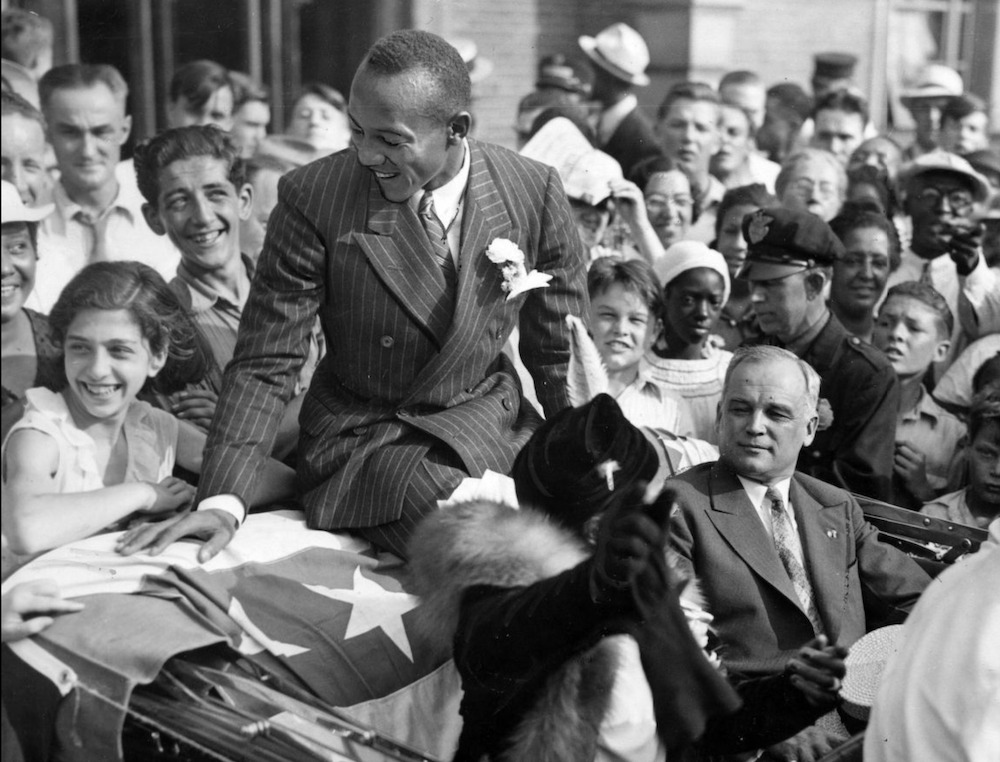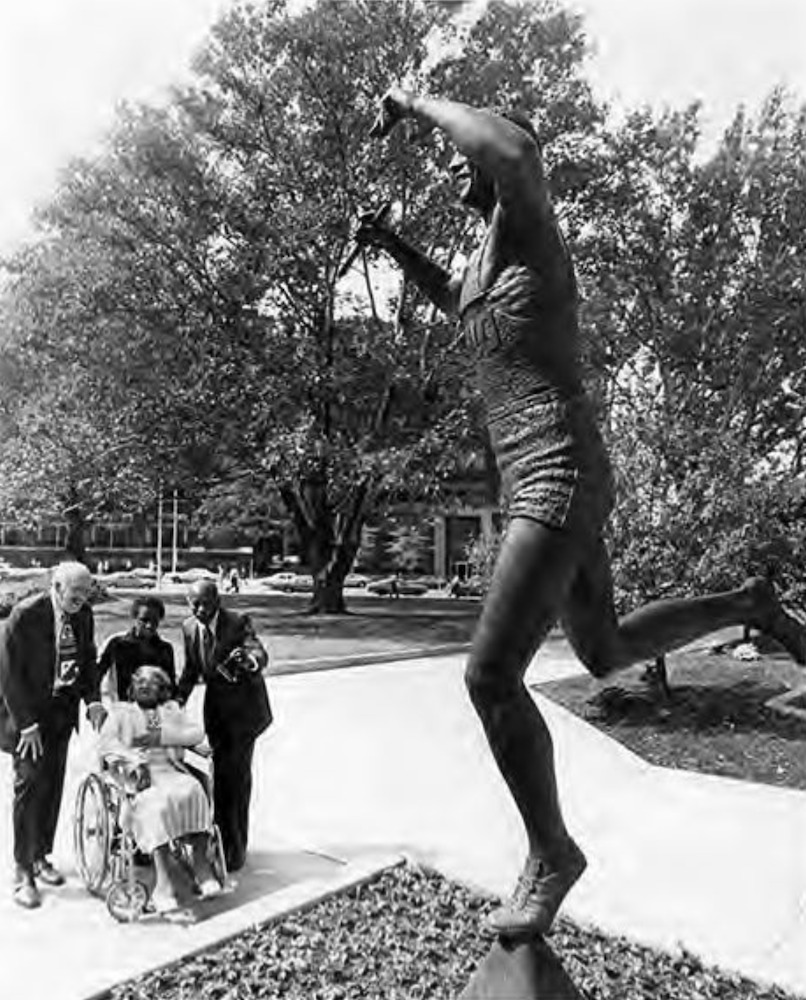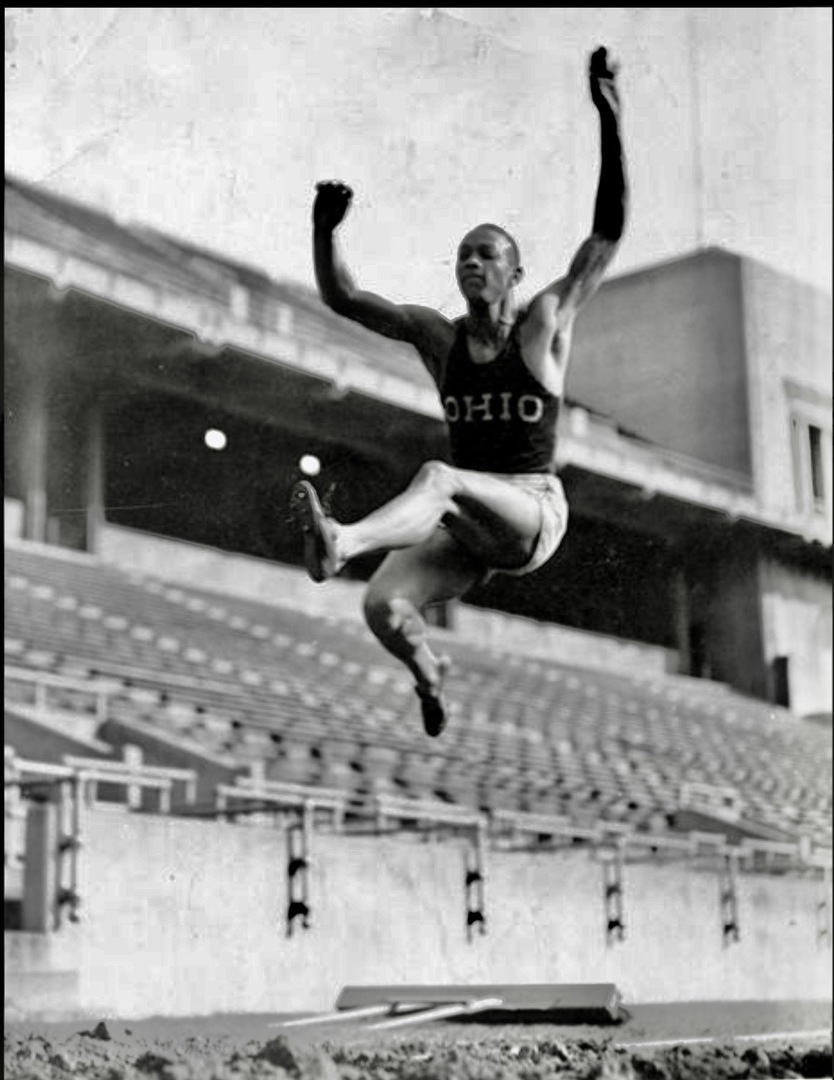
In the 1936 Olympics held in Berlin, Germany, African American Jesse Owens won 4 gold medals for the United States, sending a clear message to Adolf Hitler about his Nazi regime and theories of white supremacy. Owens' early years in Cleveland contributed in no small way to his ability to cope with racism at home and abroad while at the same time performing at the highest levels in athletic competitions.
James Cleveland "Jesse" Owens, widely considered to be one of the greatest American athletes of the 20th century, was born in 1913 in Oakville, Alabama. His parents, Henry and Emma Owens, were sharecroppers who, like thousands of other African Americans living in the South in the post World War I era, decided to leave and migrate to one of the industrial cities of the North. By 1922, Henry and Emma and their eight children had moved to Cleveland and were renting a house on Hamilton Avenue near East 21st Street. The area was home to a small enclave of African Americans who lived within a larger ethnic neighborhood composed predominantly of immigrants from Poland, Lithuania, Russia, and Serbia.
Jesse, as he would later come to be called, was the family's youngest son. According to an interview he later gave in 1961, he made friends with the Polish boys in the neighborhood who were his age, saying that the color of his skin did not seem to matter to them. Like his father and older brothers who worked in the nearby steel mills, Jesse also worked in his new neighborhood, finding employment as a shoe shine boy at a nearby shoe repair shop on St. Clair Avenue.
In 1926, when he was 13 years old, his family moved to a house on East 90th Street, just south of Cedar Avenue. The move may have been prompted by his mother's discomfort in the Hamilton Avenue neighborhood. Years later, Owens remembered her keeping the window blinds closed all day and rarely venturing from the house unless accompanied by a member of her family. The family's new house was located in a part of the Cedar-Central neighborhood, east of East 55th Street, where many middle class and professional black families were settling in the 1920s.
The Owens family's relocation to East 90th Street would make all the difference to Jesse's future. He was enrolled in the sixth grade at nearby Bolton Elementary School and it was there that he acquired the name "Jesse" when his teacher asked him what his name was and he responded, with a Southern drawl, "J.C. . . Owens." Even more importantly, it was at Bolton where Owens was introduced to Charles Riley, a playground supervisor there. Riley was also the track coach at Fairmount Junior High on East 107th Street, the school where Owens would be attending the following year. Riley devoted himself to working with underprivileged youths and soon took Owens under his wing, training him every day before school started, often also bringing breakfast to the underweight boy. When Jesse started seventh grade at Fairmount the following year, Riley, seeing his potential, convinced him to try out for the track team.
It didn't take long before Cleveland began to take notice of track star Jesse Owens. Local papers reported in March 1928 that he took first place in the high jump at the annual Cleveland Athletic Club Indoor Meet held at Cleveland Public Hall. A year later, as an eighth grader competing at the same meet, he won three events--the high jump, the 40 yard low hurdles and the 40 yard dash--setting meet records in two of them. In March 1930, he returned to the Cleveland Athletic Club indoor meet at Public Hall for the final time as a junior high student, setting a new record in the high jump, besting the old record by more than two inches.
In the fall of 1930, Jesse Owens started high school at East Tech on East 55th Street. The joy of beginning high school may have been tempered, as it likely was for many other Cleveland students, by the deepening of the Great Depression which had struck America the year before. Just prior to its onset, Jesse's father was injured in a car accident and lost his job at the steel mill. Even after he recovered, he was not hired back. Jesse's older brothers also lost their jobs at the mill as the national economy slowed. To survive, Henry and Emma, along with the families of several of their adult children, moved in together into a two-family house at 2211 East 95th Street. Later, this extended family moved into a larger house at 2178 East 100th.
While his family struggled to just survive, Jesse thrived in high school, especially in sports. By this time, he was the only one of Henry and Emma Owens' eight children who had not dropped out of school to work and help support the family. Although he excelled in several sports in junior high, Owens was persuaded by East Tech's principal to now focus exclusively on his best sport, track and field. He also gave up the high jump--at the time arguably his best event--because East Tech already had a good jumper in future Olympic silver medalist Dave Albritton. Owens believed that he could best contribute to the success of his team at track meets by concentrating on the broad jump and several of the sprint events.
After a string of victories and record-setting performances at various track meets during his first two years at East Tech, Owens decided to try out for the 1932 Olympic team. At the tryouts held in June in Chicago, he found himself competing against older and more seasoned athletes and, despite performing well for a high schooler, he did not make that Olympic team. In his senior year, the high schooler bounced back, especially at the National Interscholastic Championships, where he won the long jump, as well as the 100 and 220 yard dashes, setting new national interscholastic records in all three events. The City of Cleveland honored Owens afterwards with a parade and a personal meeting with Mayor Ray T. Miller, who presented him with a laudatory city resolution.
As his high school years at East Tech came to a close, Jesse Owens publicly announced in August 1933 that he had decided to attend college at Ohio State University, where he planned to continue his amateur track and field career. It was a decision that angered leaders in the black community in Cleveland and elsewhere who referred to the university as "color-line Ohio State," because of its unfair treatment of black students at that time. According to Owens' principal biographer, however, Owens made his decision based solely upon which college he believed would best enable him to continue to contribute to his family's support.
Jesse Owens' support obligations had increased at the beginning of his senior year in high school when his girlfriend Ruth Solomon gave birth to their first child. From that point on, Owens added the obligation of supporting his child to what he felt was a continuing obligation to help support his parents. In the 1930s, colleges did not offer athletic scholarships in track and field. Therefore, for a track and field athlete like Owens, the only way to both attend college and meet family support obligations was to find a job that would enable him to do both. Ohio State offered him such a job, arranging for him to be hired as an elevator operator at the State House in Columbus while attending college. According to Owens, he made enough money at this job to not only pay his school tuition and personal living expenses, but to also send money home every week to both his mother and to Solomon, whom he married in Cleveland in 1935.
At Ohio State, Jesse Owens continued to win and set records in the long jump and sprint events. In May 1935, he achieved international fame and became a favorite for the 1936 Olympics to be held in Berlin, Germany, as a result of his performances at the Big Ten Championship Meet in Ann Arbor, Michigan. There, just days after being hospitalized for a back injury sustained in a fall down a flight of stairs on Ohio State's campus, he won the long jump, the 220 yard low hurdles, and the 100 yard dash, setting world records in all three events. One year later, at the Berlin Olympics, Owens won four gold medals--in the long jump, 100 and 200 meter dashes and as a member of the 400 meter relay team. He returned home to the United States to parades in New York City and in Cleveland. While some writers at the time contended that Hitler had snubbed Owens at the Olympics, historians have subsequently noted that the real snub he received was from President Franklin D. Roosevelt who, fearing to offend Southern Democrats, failed to even congratulate Owens, much less invite him to the White House.
Jesse Owens' Olympic victories signaled the beginning of the end of his days in Cleveland. After being honored with a parade in Cleveland for the second time, he looked for work in Cleveland but found very little that provided compensation commensurate with the level of success he had experienced at the Olympics. Since 1933, when not attending classes in Columbus, Owens had worked in Cleveland as a filling station attendant at Alonzo Wright's Sohio gas station at East 93rd and Cedar. He now hoped that Cleveland would give him a better paying and more prestigious job, but the City instead offered him a position as a playground supervisor which paid an annual salary of only $1,600.00. He later referred to the combination of grand parades which honored him and the meager jobs which were offered him as "parades and poverty."
For several years following his Olympic experience, Owens explored businesses opportunities in Cleveland and elsewhere. One was the Jesse Owens Dry Cleaners store, which he and several business partners opened at the corner of East 100th and Cedar in 1938. Within a few years, however, the business failed, bankrupting Owens and causing a bank to foreclose on the house at 2187 East 87th Street which he had bought for his parents in 1936. According to a Call and Post news article, Owens was able to later buy a second house for them on Westchester Avenue in the Glenville neighborhood. However, just two weeks after moving into this house, Jesse's mother died. Two years later, his dad died, and, shortly after that, Jesse Owens departed Cleveland for good, accepting a management job in Detroit with the Ford Motor Company. Later, he moved to Chicago where he lived for most of the rest of his life. In 1980, Jesse Owens died at age 67.
In 1982, Cuyahoga County honored Jesse Owens by commissioning a statue of him which was placed in Huntington Park, just to the west of the Cuyahoga County Court House. More recently, in 2022, University Circle unveiled plans to honor Owens by constructing the Jesse Owens Olympic Oak Plaza at Wade Park. The plaza, located just north of the Rockefeller Lagoon, is (as of May 2023) partially constructed. Its centerpiece is an oak sapling which was cloned from the last of the surviving oak trees given to Owens by the German Olympic Committee in 1936 to commemorate his four Olympic gold medals. Were he alive today to witness these postmortem honors from the County and now University Circle, Inc., Jesse Owens might thank them but at the same time remind them that "parades" alone will not reduce "poverty" in underserved communities like the ones he lived in when he called Cleveland his home.
Images

